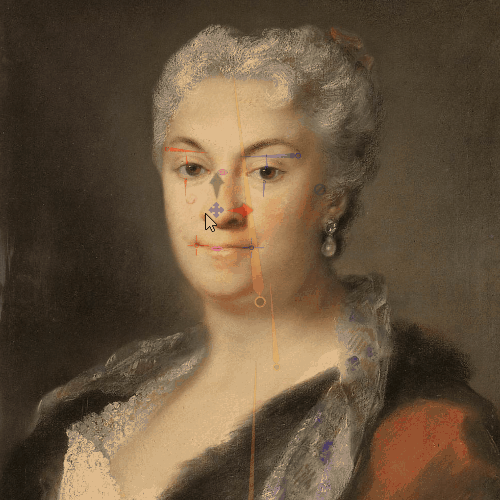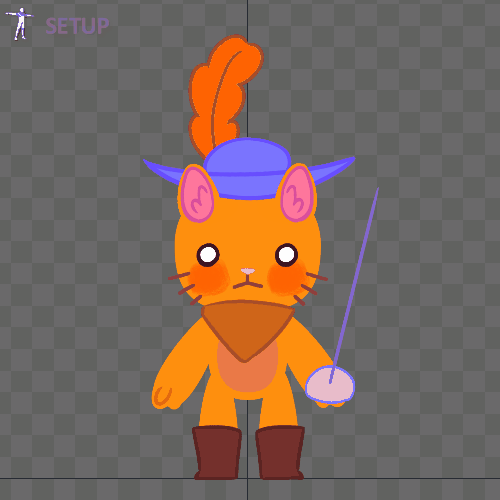Among the various things I contributed to Spine, here are a couple of my favorite ones, which I hope you’ll appreciate too.
Inverse controls
The now popular inverse controls system applied to heads and later anything else was born while I was working on a sadly closed project in the summer of 2017. I unfortunately can’t show the character, but it had this wonderful stylized face, and me being the rigger, I wanted to add a little special touch to this character that was supposed to do some acting. I had already experimented with simulating face depth using constraints in 2016 on a painting, but that’s where I got the wild idea of moving the pivot in a hypothetic middle of the face. I later began showing my system in twitch streams, most notably the first ones, and the elderly lady one, and it has since become a quite popular way of simplifying the animation controls by spending a little more care on the rigging in the beginning.

This little owl below was painted and animated by me, the code is taken from the same example on the Esoteric Software page with some tweaks to make the head follow the mouse a bit slower. The head of the owl uses the inverse controls system.
Multi-direction characters
Fitting several directions in the same skeleton in Spine had always been a bit of a challenge, involving several long discussions in forums on how to implement this, but no pure solutions that truly achieved this.
Working in teams sometimes a person would alter my skeletons to add a new pose, such as a death pose, adding a gazillion bones and cluttering the rig, this could not just go on for every new pose to add. This problem was sitting in the back of my mind for a long time, so I got determined to find a solution that would truly reuse the same bones.
Several streams document the two main solutions I found to this. One involving moving little pieces around, and another involving brand new sets of assets for every direction. It may seem like a complicated setup at first, but the outcome is the cleanest possible in terms of ease of use. Feel free to ask me about it!

My rigging philosophy
I am of the idea that the simplest a rig is to use, the more elegant it is. Having had to learn over many past errors, I now greatly prefer to spend more time thinking and creating a great versatile rig, than having to keep trying to fix overcomplicated ones.
I often write about rigging techniques on the Esoteric Software blog, and have started a hashtag on twitter to share rigging tips called #skeletember also collected in the Spine tips page and in the Spine welcome screen.
I believe sharing knowledge is beneficial to every part involved, and I’m the happiest when I get to see the results of someone using a technique I thought. If you did share it with me once, thank you.
